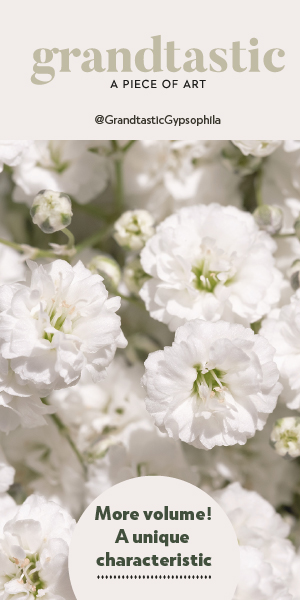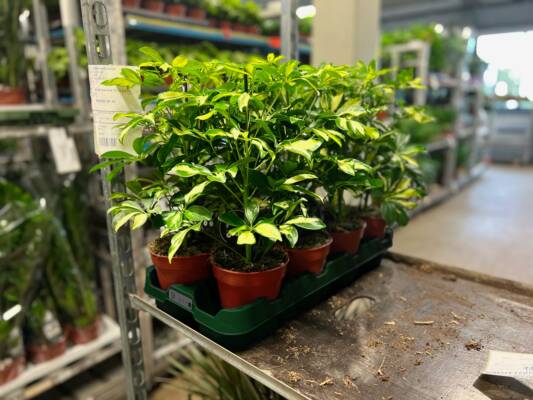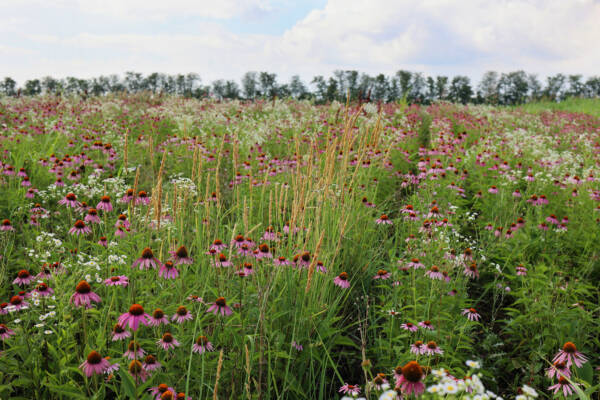Valentine’s Day is the number one holiday for everyone involved in the floral industry, driving consumer purchases in Europe and the USA, with peak demand for flower farms in Colombia and Ecuador, the number one and two exporters of flowers to the USA, writes Jaap Kras for FloraCulture International February 2022.
The 14-day Europe weather forecast does not include traffic-hampering snow or ice. Growers are thankful for this winter’s conducive weather with no subfreezing temperatures or disturbing conditions in Colombia and Ecuador.* Transportation costs are high, but demand is the decisive factor behind successful Valentine’s Day sales.
At the time of writing, 27 January 2022, Europe is not suffering from pre-Valentine’s Day nervousness. Flower shipments continue to move, and it is more or less ‘smooth sailing’.
For the second consecutive year, prices in all cut flower categories are good. Roses are expensive – Dutch grown long-stemmed roses auction off at € 1,20 per stem, tulips yield between 25 to 27 cents, while imported carnations from Italy and Colombia exchange hands for 26 – 29 cents. East African grown roses trade at prices that are a little bit cheaper.
Skyrocketing tulip prices put the bouquet factories again in a difficult position as supermarkets are only willing to pay between 14 – 15 cents per tulip.
So it is of paramount importance that bouquet makers contract their supplying growers at forehand. But with last year’s prices on the free market fresh in their minds and faced with higher bulb prices this autumn, tulip growers are reluctant to engage in too sharp deals with their bouquet maker customers.
The price hike in flowers can partially be explained by hoarding growers who store their flowers in coolers in the wait of even higher Valentine prices.
Apart from its first shockwave sent through the industry in the early pandemic, Covid-19 causes the unusual situation where both flower grower and floral wholesaler make a good profit.
In 2020 many horticultural entrepreneurs reported that sales were going through the roof. Sales in 2021 performed even better.
In January, Royal FloraHolland reported its average flower prices in 2021 were 20 per cent higher than the year before.
In the United States, the situation is similar. According to industry veteran William Armellini, prices hold out very well in the States and are even record-breaking for some categories such as carnations. The general feeling is that the market will stay buoyant with good prices and demand. He anticipates supermarkets will absorb a fair deal of supply volumes keeping wholesale prices firm.
American wholesalers biggest headache for this moment is logistics. Getting products out of South America is challenging and historically expensive. In the USA, transportation companies struggle to hire new truck drivers. The same situation occurs in Europe.
A happy ever after story
William says carnations are expensive. And I hear the same story in Europe. Every industry veteran will remember how carnations in the 1960s fuelled the growth of the international cut flower trade. In those early years, carnations and roses occupied a lonely place in the world’s top-selling cut flowers.
The 1970s heralded the arrival of a new range of cut flowers, while the potted plant industry started to emerge.
However, this flower’s popularity started to decline in the 1990s, combined with a rather steadfast attitude at the wholesale level that the ‘consumer was tired of seeing carnations’.
Meanwhile, growing carnation had become a complex endeavour. Fusarium forced growers to rotate crops and steam disinfect their soil, which was unpleasant.
Also, carnation growers needed a good pair of hands to harvest the crop. In the early days of carnation production, the iconic Sim varieties, named after the Scottish breeder William Sim, suffered from calyx splitting, a physiological disorder caused by the formation of many petals or adventitious buds inside the flower calyx at fluctuating temperatures. So the growers needed to place a rubber band around the calyx or wrapping tape around the bud to cover the split.
Today, I am delighted to see how the carnation is making its come back. The modern carnation is truly a beauty; the range of available varieties is endless, they transport well, boast a long vase life, and calyx splitting has mostly disappeared. Be ready to see the carnation regaining its mighty power from the past.
*Editor: At the time of printing, news broke from Ecuador about torrential rains causing landslides, floodings and casualties. The impact on our industry so far is unclear.






























